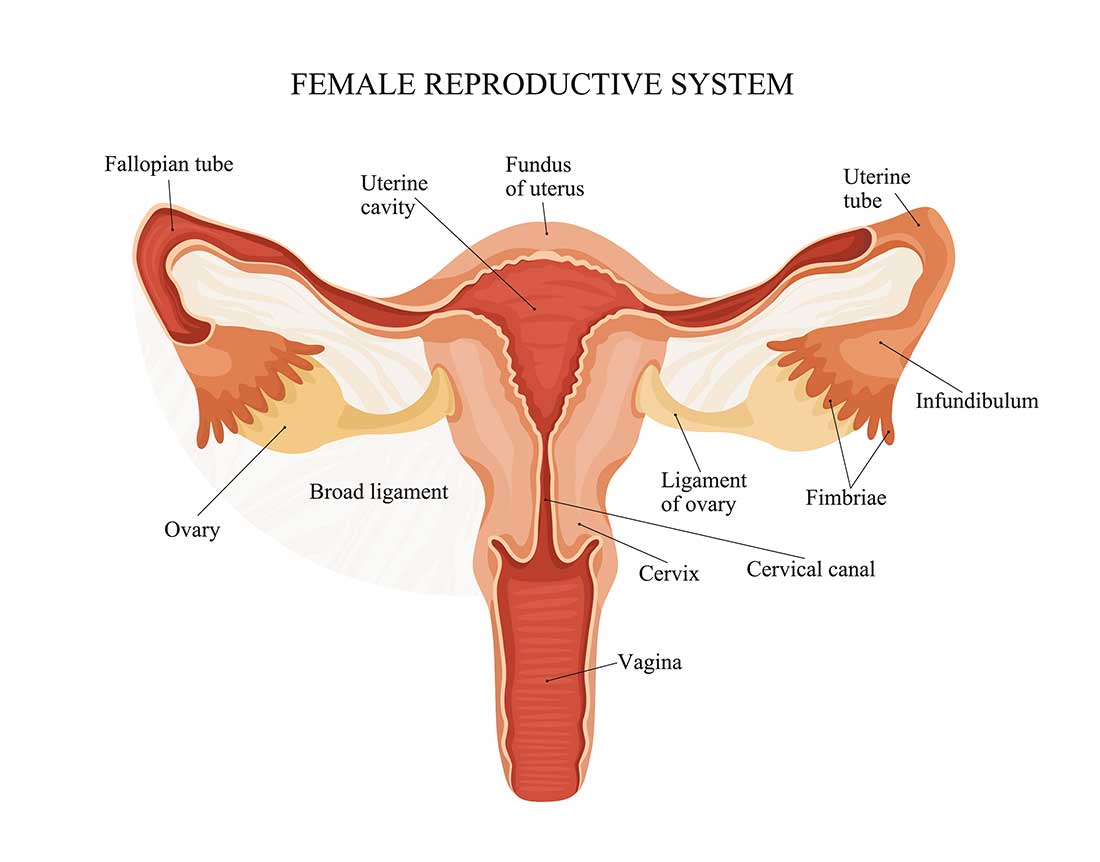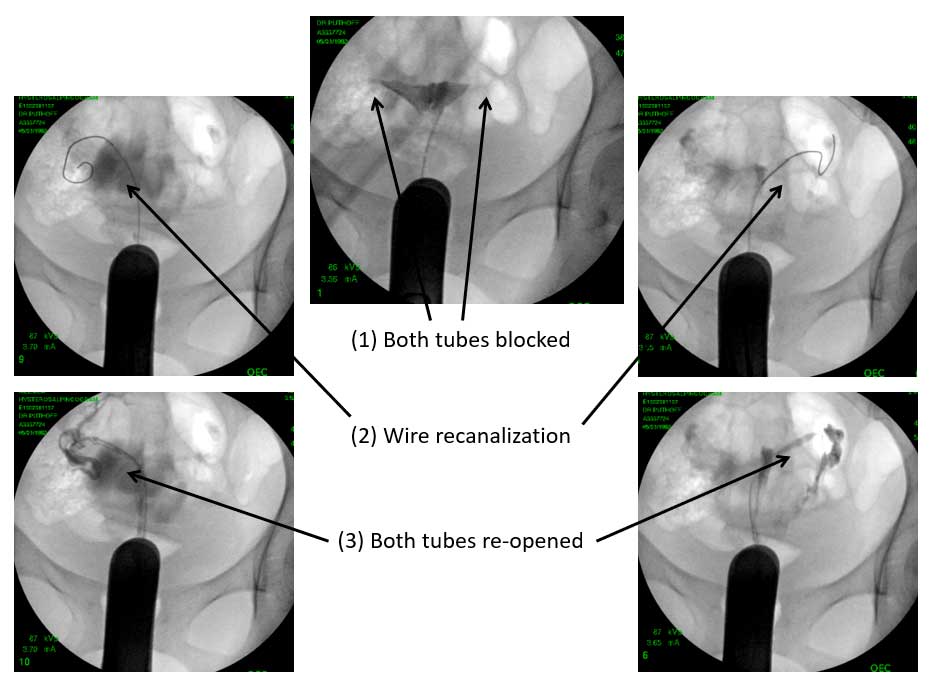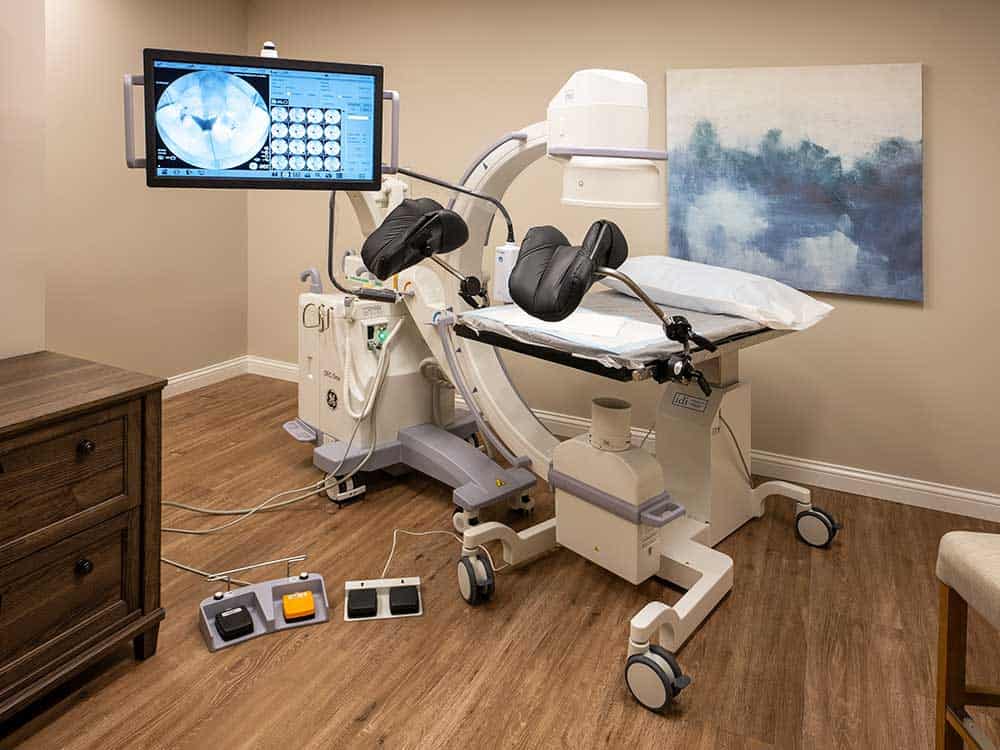Selective Salpingography & Fallopian Tube Recanalization
A selective salpingogram is a specialized imaging procedure that allows us to evaluate each fallopian tube in detail—often going beyond the information provided by a standard hysterosalpingogram (HSG). When a blockage is found, this test can be combined with fallopian tube recanalization—a minimally invasive technique that opens the tube during the same procedure.
At Veritas Fertility & Surgery, we use this targeted approach for women whose fertility evaluation suggests a possible tubal blockage, helping to both diagnose and treat in a single visit. What’s even better…? We can perform this procedure in the comfort of our office.

What is Selective Salpingography?

While a traditional HSG uses X-ray contrast dye to evaluate both fallopian tubes at once, a selective salpingography uses a very small catheter placed directly into the opening of one tube at a time. This allows us to:
- Evaluate each tube independently, even measuring the pressure it takes to push the contrast dye through the tube
- Pinpoint the exact location of a blockage
- Distinguish between a true blockage and a temporary spasm of the tube
Because this test is so precise, it can identify problems that a standard HSG might miss.
What is Fallopian Tube Recanalization?
If the selective salpingography confirms a proximal blockage (near the uterine end of the tube), a recanalization can be performed during the same procedure. Using a tiny, flexible guidewire passed through the catheter, the blockage can be gently cleared, restoring tubal patency and alleviating the blockage in 90-95% of cases.
This technique is:
- Minimally invasive—no incisions, performed under imaging guidance
- Quick—recanalization is often completed in minutes once the blockage is identified
Effective—success rates for opening proximal blockages can be very high (90-95%)


How the Procedure Works
- A numbing medication is performed to help minimize any discomfort from the procedure.
- A small catheter is placed through the cervix into the uterus.
- Under fluoroscopic (real-time X-ray) guidance, the catheter tip is gently guided into the opening of one fallopian tube.
- Contrast dye is introduced to evaluate the tube’s appearance and determine if there is a blockage.
- If a blockage is seen near in the portion of the tube that is closet to the uterus, a small, flexible guidewire can be advanced to clear it.
- The process is repeated for the other tube if needed.
The entire procedure generally takes 15-20 minutes.
Benefits of This Approach
- More precise diagnosis than a standard HSG
- Opportunity for treatment during the same session if a blockage is found
- No surgery required—performed through the cervix
- Quick recovery—most patients return to normal activities the same day
- Potential to restore natural fertility without the need for IVF
Next Steps
If your fertility evaluation shows a possible tubal blockage—or if you’ve been told you have a blocked tube after an HSG—selective salpingography with possible recanalization may give you both answers and a chance for immediate treatment.
Contact us today to learn more or to schedule your consultation.
FAQs


